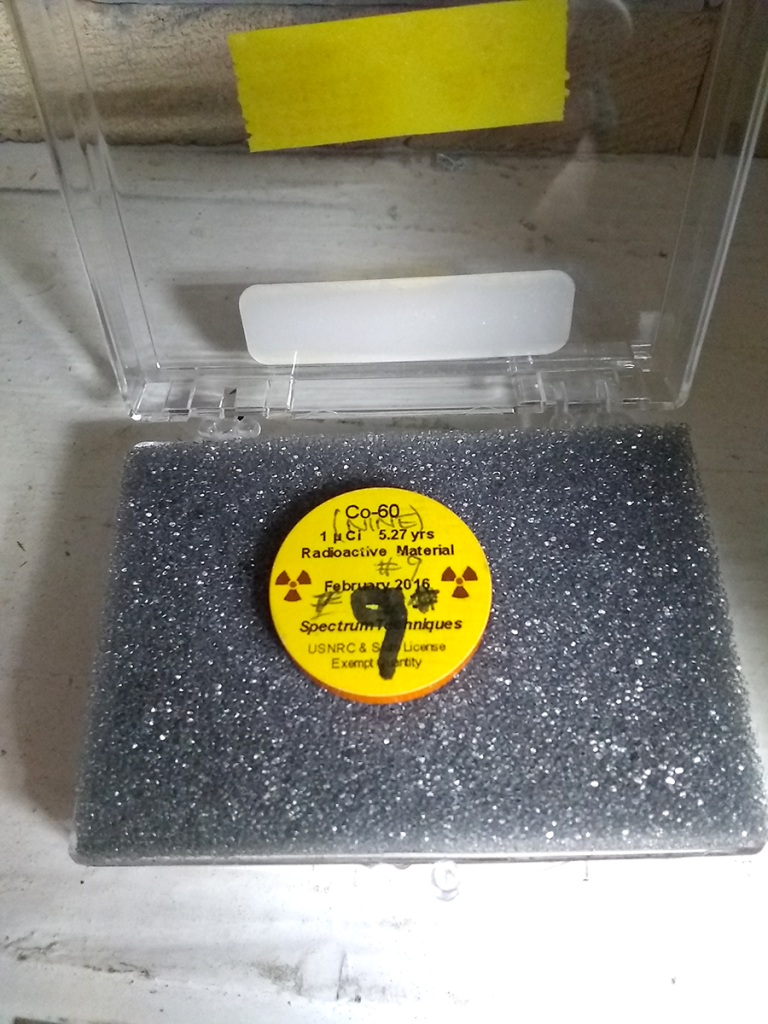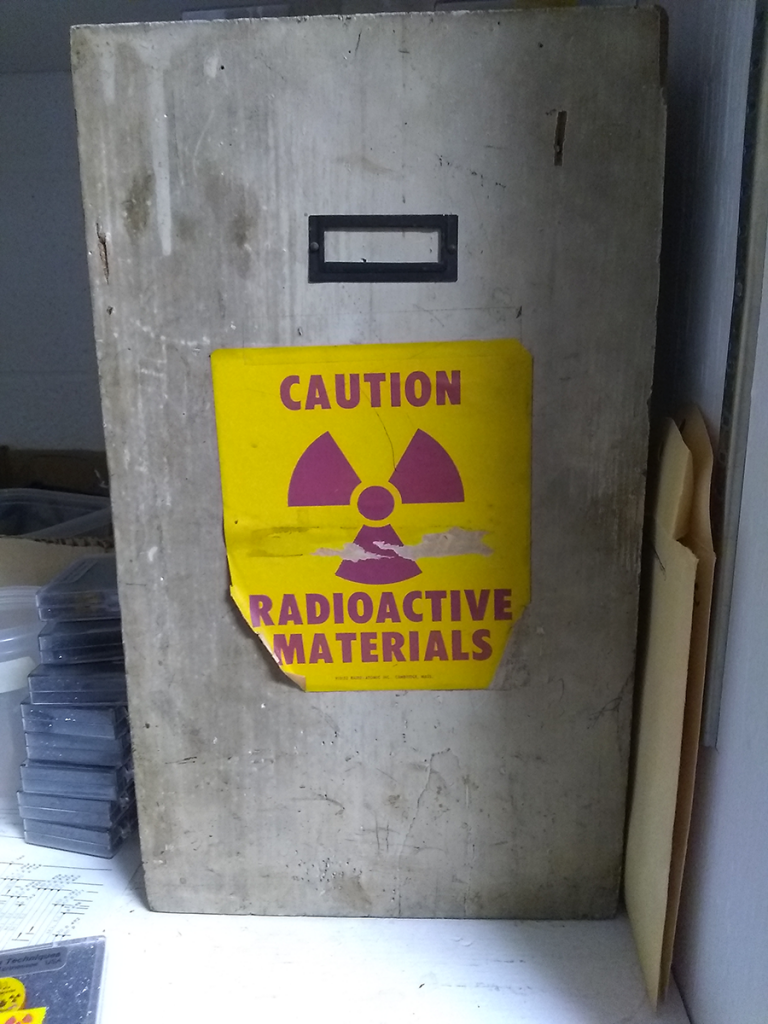
Radioactivity makes people squirm. It’s not hard to understand why. Whereas most potential dangers offer some sensory warning, radioactive materials don’t. For the most part. If your senses are picking up the direct effects of radiation, you are long past any level of safe exposure. Somehow, things have gone quite sideways for you.
But this is introductory Physics lab, and we’re here to learn in a safe environment. We’ll stick to sources that keep below the United States Nuclear Regulatory Commission’s Exempt Quantity Limit. That’s readily available in the table from § 30.71 Schedule B, which indicates the limits in microcuries [µCi] for a wide range of nuclides. In our labs, we use cobalt-60 and cesium-137 for different purposes, though you can have fun reading through the entire table to remind yourself that dysprosium, hafnium, and samarium are all on that periodic table, too.
Lots of elements struggle to become household names. Maybe it’s for the best that most of don’t have to concern ourselves with the particulars of terbium on a daily basis. (It’s key to creating the green phosphors essential to fluorescent light, so now we’ve all learned a new factoid.)
We use these little 1-inch disks as relatively constant reference sources in labs. The disk, of course, is way bigger than the tiny chip of cobalt inside, which randomly decays into a stable isotope of nickel-60, spitting out a beta particle (an electron) and some gamma rays (high-energy photons). While it’s impossible to predict when any specific atom will decay, a sufficient quantity of them all bunched up together result in an output that’s mostly predictable. In any given second, you might hear several (or zero) clicks on your Geiger-Müller counter, but if you count them over longer intervals, the clicks-per-interval numbers get awfully close to each other.
With a half-life of 5.27 years, one little disk of cobalt-60 can handle years of students labs. While we wait for Physics 212 to roll around again, they bide their time in this little box:

We keep it way in the back of a locked storage room. It’s lined with lead on the inside, even if that’s not strictly necessary. You probably shouldn’t stuff a bunch of cobalt disks in your pocket for the day, and you definitely shouldn’t eat any. (Physics labs don’t typically use edible materials, and even when we do – such as non-dairy coffee creamer – we mark them as not for consumption. Just don’t eat anything in the lab, okay?) It does keep everything in one easy-to-find place, though, and big CAUTION stickers tend to keep curious fingers out.
We use big, scary yellow CAUTION signs in the shop to keep curious fingers away from sharp objects, too. Sharp and poky things are way more likely to ruin your day around here. So be careful, please.